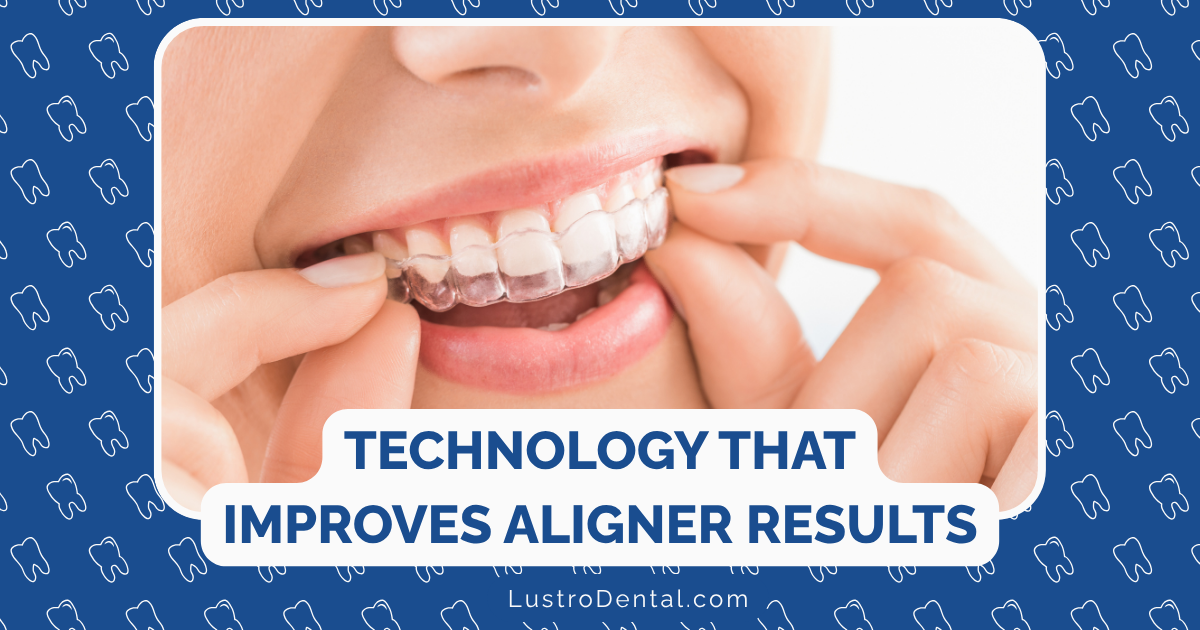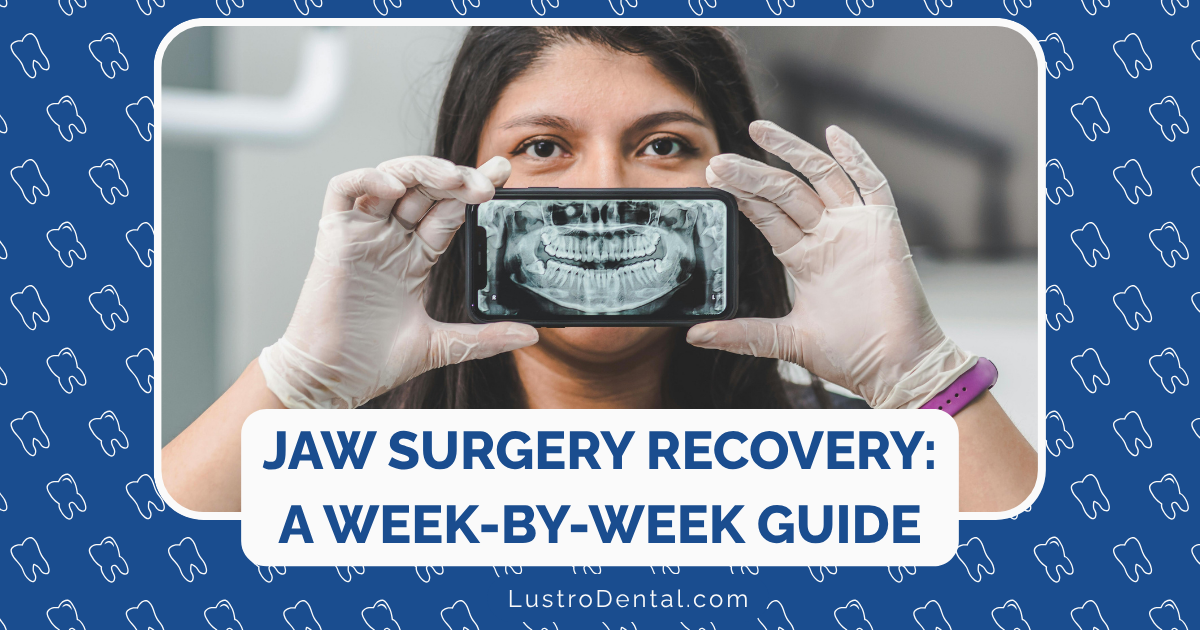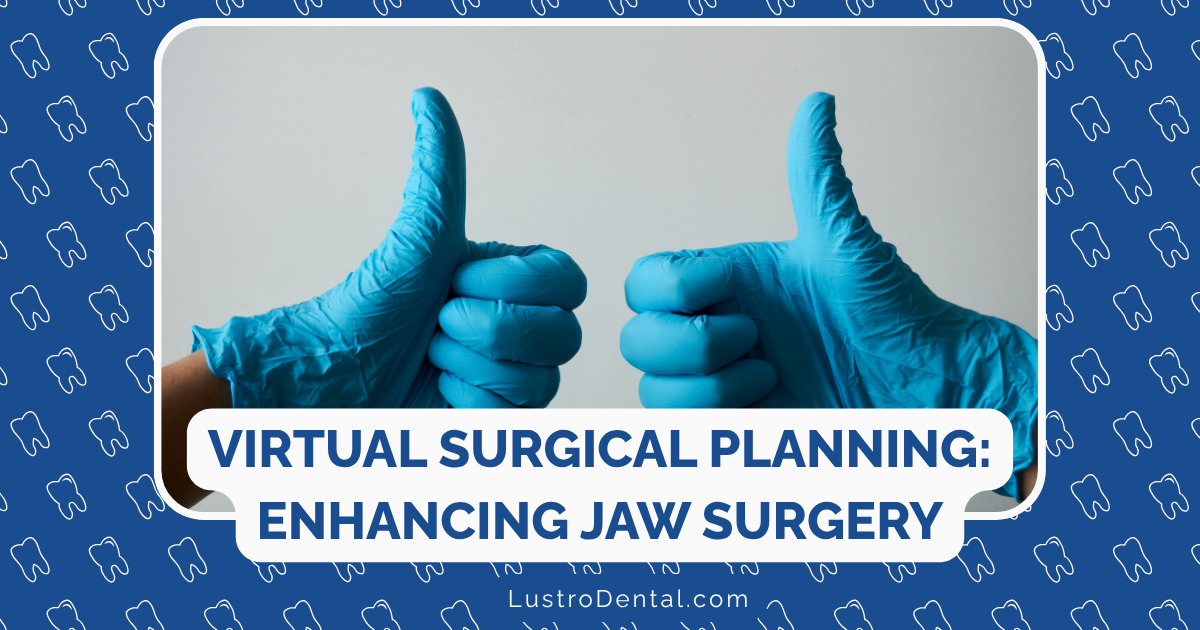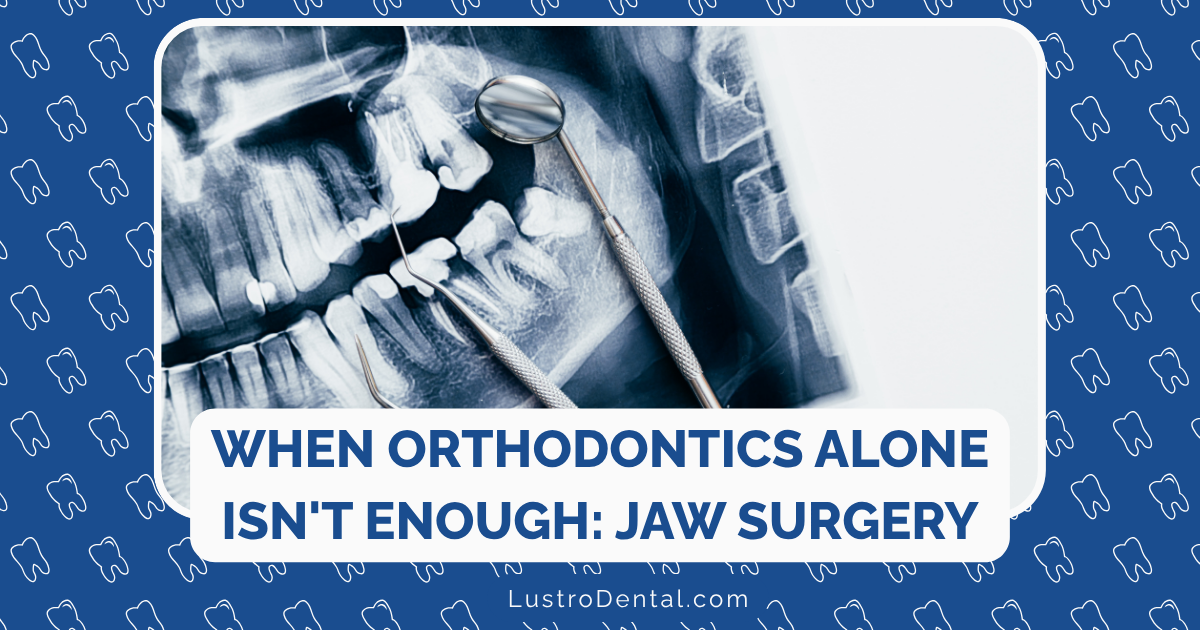Clear Aligner Compliance: Tech Solutions Helping Patients Stay on Track

The success of clear aligner therapy hinges on one critical factor that no amount of advanced orthodontic planning can overcome: patient compliance. The most precisely engineered aligners in the world won’t work if they’re sitting in their case instead of on your teeth.
As an orthodontist who’s guided thousands of patients through clear aligner treatment, I’ve seen firsthand how the 20-22 hour daily wear requirement can be challenging to maintain. Life happens—meals stretch longer than expected, social events tempt you to leave aligners at home, and sometimes you simply forget to put them back in.
The good news? Technology is revolutionizing how patients approach aligner compliance. In 2025, a new generation of tech solutions is making it easier than ever for patients to stay on track with their treatment—and for orthodontists to provide more effective guidance.
Let’s explore the cutting-edge technologies transforming clear aligner compliance and how they’re creating better outcomes for patients everywhere.
The Compliance Challenge: Why It Matters
Before diving into technological solutions, it’s important to understand why compliance is so crucial for clear aligner treatment success:
The Science Behind Aligner Wear Time
Clear aligners work through consistent, gentle pressure that gradually moves teeth into their desired positions. Research published in the American Journal of Orthodontics and Dentofacial Orthopedics has shown that:
- Teeth require 4-8 hours of continuous force to initiate the biological process of tooth movement
- Interrupting this force by removing aligners frequently resets the process
- Each time aligners are removed and replaced, there’s a lag period before effective tooth movement resumes
This is why orthodontists prescribe 20-22 hours of daily wear—it ensures teeth receive consistent pressure with minimal interruptions.
The Compliance Gap
Studies reveal a significant discrepancy between reported and actual wear time:
- Patients self-report wearing aligners an average of 21 hours daily
- Objective measurements often show actual wear time of just 14-17 hours
- This 4-7 hour “compliance gap” can extend treatment time by 30-50%
Dr. Sarah Johnson of Metropolitan Orthodontics explains: “When patients wear aligners less than prescribed, teeth don’t move as expected. This leads to ‘tracking issues’ where teeth fall behind the treatment plan, often requiring additional aligners, extended treatment time, and sometimes complete treatment revisions.”
Tech Solutions Transforming Aligner Compliance in 2025
The orthodontic industry has responded to compliance challenges with innovative technologies designed to help patients stay on track. Here are the leading solutions changing the game in 2025:
1. Embedded Microsensor Technology
Perhaps the most significant advancement in aligner compliance has been the development of microsensors embedded directly within the aligners themselves.
How It Works
- Tiny temperature and motion sensors are embedded in the aligner material
- Sensors detect when aligners are in the mouth based on temperature (37°C/98.6°F) and micro-movements
- Data is transmitted to a smartphone app via Bluetooth
- Precise wear time is recorded, creating an objective record
Leading Systems
DentiTrac® Smart Aligners This system not only tracks wear time but also monitors spatial orientation and movement patterns, providing insights into how consistently aligners are seated properly.
TheraMon® Microsensors These temperature-based sensors have been clinically validated to provide accurate wear time data within a 15-minute margin of error.
SmartTrack Compliance Align Technology (makers of Invisalign) has integrated microsensors into select aligner products, allowing for precise compliance monitoring through their app ecosystem.
Real-World Impact
A 2024 study published in the Journal of Clinical Orthodontics found that patients using aligners with embedded sensors:
- Increased their daily wear time by an average of 3.2 hours
- Completed treatment 27% faster than control groups
- Required 35% fewer refinement aligners
Dr. Michael Chen, orthodontist at Advanced Orthodontic Solutions, notes: “The simple awareness that wear time is being monitored objectively makes a tremendous difference. It’s human nature—we perform better when we know our actions are being measured.”
2. AI-Powered Remote Monitoring Systems
While embedded sensors focus on wear time, AI-powered remote monitoring systems evaluate whether treatment is progressing as planned.
How It Works
- Patients take regular photos of their teeth using a smartphone app
- Proprietary scanning devices ensure standardized, high-quality images
- AI algorithms analyze tooth movement and aligner fit
- The system flags potential issues for orthodontist review
- Patients receive feedback and instructions based on the analysis
Leading Systems
DentalMonitoring This platform can detect over 130 oral observations remotely, including tracking whether aligners are seating properly. The system includes a proprietary ScanBox pro device that patients use with their smartphones to capture standardized images.
CandidMonitoring™ This AI-driven platform evaluates photos submitted by patients to assess aligner fit and determine if prescribed movements have been achieved. The system can alert patients when it’s safe to move to the next aligner in their series.
Grin Remote Monitoring System Using a specialized phone attachment called the Grin Scope, this system captures high-quality intraoral images that are analyzed by AI and reviewed by the patient’s orthodontist.
Real-World Impact
Remote monitoring systems have shown remarkable benefits:
- Reduced in-office visits by up to 60%
- Enabled faster aligner changes (every 4-7 days versus traditional 10-14 days)
- Improved treatment outcomes by catching tracking issues early
- Enhanced patient satisfaction through continuous feedback
“Remote monitoring has completely transformed how we practice,” explains Dr. Lisa Patel. “We can now provide the oversight patients need without requiring them to come to the office every 6-8 weeks. When issues arise, we address them immediately rather than discovering problems weeks later.”
3. Gamified Compliance Applications
Leveraging behavioral psychology, gamified apps are making compliance more engaging and rewarding for patients.
How It Works
- Mobile apps track aligner wear time (either through user input or synced with sensors)
- Patients earn points, badges, or rewards for meeting compliance goals
- Progress visualization shows treatment advancement in real-time
- Competitive elements allow comparison with other patients or personal bests
- Achievement systems provide positive reinforcement
Leading Systems
Align Wear Time Rewards This system integrates with sensor data and rewards consistent wear with points that can be redeemed for gift cards or treatment accessories.
OrthoFi Smile Journey Patients earn virtual badges and milestone celebrations while tracking their progress through visual timelines and before/after comparisons.
SmileSnap Compliance Challenge This platform allows orthodontic practices to create office-wide challenges and leaderboards, fostering friendly competition among patients.
Real-World Impact
Gamification has proven particularly effective with younger patients:
- Teenage compliance rates increased by 40% in practices using gamified systems
- Treatment satisfaction scores improved by 27%
- Patients reported feeling more engaged and motivated throughout treatment
“The psychological element of compliance can’t be overstated,” says behavioral psychologist Dr. Jennifer Williams. “Gamification transforms a medical requirement into something fun and rewarding, which is exactly what many patients need to maintain consistency.”
4. Smart Aligner Materials with Wear Indicators
Beyond electronic monitoring, innovative aligner materials themselves can now indicate wear time.
How It Works
- Special food-grade dyes or materials are incorporated into aligners
- The indicators change color based on cumulative exposure to saliva
- Color changes provide a visual representation of wear time
- Both patients and practitioners can easily verify compliance
Leading Systems
ChromAlign Technology These aligners incorporate a subtle color-changing strip that gradually transitions from clear to blue based on cumulative wear time.
WearCheck Indicators Small dots embedded in the aligner material change from white to blue after approximately 12 hours of wear, providing a simple binary indicator of daily compliance.
GradientWear Technology Rather than a binary indicator, this system shows a gradient color change that correlates with the number of hours worn, giving more nuanced feedback.
Real-World Impact
While less precise than electronic sensors, visual indicators offer unique advantages:
- No dependency on battery life or Bluetooth connectivity
- Lower cost implementation
- Immediate visual feedback without requiring an app
- Particularly effective for younger patients and those with limited tech access
“Visual indicators serve as constant reminders throughout the day,” notes Dr. Robert Johnson. “They create accountability not just to the orthodontist but to the patient themselves, who can literally see their compliance level every time they remove their aligners.”
5. Integrated Treatment Management Platforms
Comprehensive platforms are now bringing together multiple compliance technologies into unified ecosystems.
How It Works
- Centralized platforms integrate data from sensors, imaging, and patient input
- Orthodontists access comprehensive dashboards showing compliance across their entire patient base
- AI algorithms identify patterns and predict potential compliance issues
- Automated communication systems provide personalized reminders and encouragement
- Treatment plans can be dynamically adjusted based on real-time compliance data
Leading Systems
OrthoFX FXOnTrack This AI-driven platform not only monitors compliance but can detect when treatment is off track, allowing for the rapid deployment of “rescue aligners” to get patients back on their original treatment plan without office visits.
Invisalign Virtual Care Combining compliance tracking with treatment monitoring, this platform creates a digital ecosystem connecting patients and providers throughout the treatment journey.
3Shape Unite This open platform integrates with multiple aligner brands and monitoring systems, allowing orthodontists to standardize their digital workflow regardless of which aligner system patients use.
Real-World Impact
Integrated platforms are reshaping orthodontic practice management:
- Practice efficiency increased by 35% through automated monitoring
- Treatment completion rates improved by 28%
- Patient satisfaction scores rose by 42% due to consistent communication
- Orthodontists report being able to manage 30% more aligner cases with the same staff
Benefits Beyond Compliance: The Broader Impact
While improved compliance is the primary goal of these technologies, they’re delivering additional benefits that extend well beyond simply tracking wear time:
Enhanced Treatment Outcomes
With better compliance and early intervention when issues arise:
- Treatment completes more predictably and on schedule
- Final results more closely match the original treatment plan
- Fewer refinement aligners are needed
- Overall treatment time is reduced
Improved Patient Experience
Tech solutions are making the aligner journey more engaging:
- Patients feel more connected to their treatment
- Regular feedback provides motivation and reassurance
- Reduced office visits save time and inconvenience
- Treatment progress becomes more transparent and understandable
Practice Efficiency
For orthodontic practices, compliance technology creates operational benefits:
- Staff spend less time troubleshooting compliance issues
- Fewer emergency appointments for tracking problems
- More predictable treatment timelines improve scheduling
- Higher case acceptance as patients feel more supported
Data-Driven Orthodontics
The wealth of data generated is advancing the field as a whole:
- Researchers can analyze millions of data points on tooth movement
- Treatment protocols are being refined based on objective outcomes
- AI systems continuously improve through machine learning
- New insights into the biology of tooth movement are emerging
Challenges and Considerations
Despite their benefits, compliance technologies come with important considerations:
Privacy Concerns
The collection of detailed health data raises privacy questions:
- Who owns the compliance data being collected?
- How is this information secured and protected?
- Are patients fully informed about data collection and usage?
- What happens to the data after treatment completes?
Technology Access
Not all patients have equal access to technology:
- Smartphone dependency may create barriers for some populations
- Internet connectivity is required for most monitoring systems
- Technical difficulties can frustrate less tech-savvy patients
- Cost considerations may limit access to advanced compliance features
The Human Element
Technology should enhance, not replace, the patient-provider relationship:
- Personal encouragement from the orthodontic team remains crucial
- Some patients may feel anxious about being “monitored”
- Individual circumstances sometimes require flexibility in compliance expectations
- Technology should support clinical judgment, not override it
The Future of Aligner Compliance Technology
Looking beyond 2025, several emerging technologies promise to further transform aligner compliance:
Bioresponsive Materials
Research is advancing on aligner materials that actively respond to the oral environment:
- Materials that adjust force levels based on detected wear patterns
- Self-adjusting polymers that compensate for inconsistent wear
- Biomimetic materials that enhance tooth movement biology
Advanced Biometrics
Next-generation monitoring may include:
- Saliva analysis to detect biomarkers related to tooth movement
- Micro-ultrasound to evaluate bone remodeling in real-time
- Stress and strain measurements to optimize force application
Predictive Compliance AI
Artificial intelligence is evolving to predict compliance issues before they occur:
- Identifying patterns that precede compliance drops
- Personalizing intervention strategies based on individual behavior profiles
- Optimizing treatment plans based on predicted compliance patterns
Implementation: Making Compliance Technology Work for You
If you’re a patient considering or currently in clear aligner treatment, here’s how to leverage compliance technology effectively:
For Patients
- Discuss technology options during consultation Ask your orthodontist which compliance technologies they offer and how they might benefit your specific treatment.
- Embrace rather than resist monitoring View compliance technology as a helpful tool rather than surveillance—it’s designed to support your success.
- Use feedback constructively When systems flag compliance issues, take it as an opportunity to adjust habits rather than feeling discouraged.
- Maintain perspective on gamification While earning points and badges is motivating, remember that your actual treatment outcome is the real reward.
- Provide feedback on your experience Technology improves through user feedback—share your experience to help systems become more effective and user-friendly.
For Orthodontists
- Match technology to patient needs Not every patient requires the same level of compliance monitoring—tailor your approach to individual cases.
- Introduce technology positively Frame compliance tools as supportive resources rather than enforcement mechanisms.
- Train team members thoroughly Ensure your entire team understands how to interpret compliance data and communicate effectively with patients.
- Integrate with existing workflows Choose systems that complement rather than complicate your practice management.
- Balance technology with personal connection Use the time saved through automation to enhance meaningful patient interactions.
Conclusion: The Compliance Revolution
Clear aligner therapy has come a long way since the days of guessing whether patients were truly wearing their aligners as prescribed. Today’s technology is creating a new paradigm where compliance is objective, measurable, and improvable.
For patients, these innovations mean more predictable results, shorter treatment times, and a more engaging experience. For orthodontists, they provide unprecedented insight and control over treatment progression, even when patients aren’t in the office.
As we look to the future, the continued evolution of compliance technology promises to make clear aligner therapy even more effective and accessible. The most exciting aspect isn’t just the technology itself, but how it’s transforming the relationship between patients and providers—creating true partnerships in achieving beautiful, healthy smiles.
What compliance technologies have you experienced in your aligner journey? Share your experiences in the comments below!







